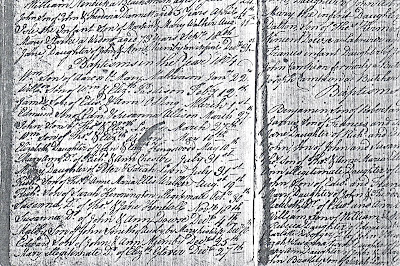Strohhaus in Schmiedrued, aus Ein Bauart aus alter Zeit einem Kalender fur das Jahr 1918.
Im Strohhaus wohnte die Familie Maurer Sigwarte.
Es wurde ca 1917/1918 abgebrochen.
Am rechten Bildrand im Hintergrund der Giebel des alten Restaurant Sternen.
Rough translation: Thatch house in Schmiedrued, out from Ein Barat, out from an older time
Calendar for the year 1918.
In thatch house resided the family Maurer, Sigwarte His rank/title about 1917 hand in/deliver to broken.
In the right hand pictured in background the gable of old restaurant Sternen.
Maurer is the family name of 4th & 5th great grandmothers: Anna Mauer 1743 who married Sigmund Bolliger and Margaretha Maurer 1681 who married Heinrich Wirz.
It's interesting to think that several generations back folks would have been living in homes just like this. All the wood stacked and ready for winter makes me think it must have been very cozy this time of year. Imagine it with a coating of snow.
Merry Christmas!
Im Strohhaus wohnte die Familie Maurer Sigwarte.
Es wurde ca 1917/1918 abgebrochen.
Am rechten Bildrand im Hintergrund der Giebel des alten Restaurant Sternen.
Rough translation: Thatch house in Schmiedrued, out from Ein Barat, out from an older time
Calendar for the year 1918.
In thatch house resided the family Maurer, Sigwarte His rank/title about 1917 hand in/deliver to broken.
In the right hand pictured in background the gable of old restaurant Sternen.
Maurer is the family name of 4th & 5th great grandmothers: Anna Mauer 1743 who married Sigmund Bolliger and Margaretha Maurer 1681 who married Heinrich Wirz.
It's interesting to think that several generations back folks would have been living in homes just like this. All the wood stacked and ready for winter makes me think it must have been very cozy this time of year. Imagine it with a coating of snow.
Merry Christmas!









































